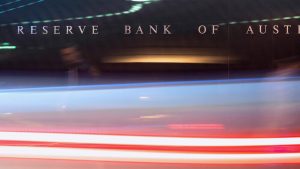Here’s our brief guide to the different types of media available to you if you’re considering paid advertising. Every dollar is precious and it’s imperative to achieve the greatest return on your investment in order to grow your business, so we’ve briefly outlined a few pros and cons about each of the main media options you have when it comes to spending your advertising dollars.
Pay per click advertising
Known as PPC, this form of advertising consists of internet ads that are run via search engines and their partner sites. You pay only for clients that click on your link, the ads can be instantaneous and very easily changed, and you can segment down your audience and select where your ads will be shown, and where they won’t – ensuring each click is more likely to be a consumer more likely to want what you’re selling. The downside is you often have to ‘bid’ for the keywords you’re looking to come up with and with competitors also wanting the same keyword searches such as ‘Italian restaurant Melbourne’ you could be paying relatively high per click prices and also be appearing in a cluttered advertising space alongside most of your competitors.
Social media advertising
Most social media platforms are now leaning more and more towards attracting the advertising dollar and it can be a very cost-effective and targeted medium to consider, particularly when it comes to a wide and targeted reach. This can be great for building customer relationships, growing your database and for the ability to connect with the next generation of customers. The downsides include the fact most people on social media are there to connect, not to be sold to, so you have to carefully consider your message and your offering so it’s not a hard sell. And be prepared for the fact that proven conversion rates are often on the low side.
Online banner ads
Banner advertising is one of the more popular forms of advertising online. An ad is produced that consumers are encouraged to click on for more information. Prices CPM (cost per mille or cost per thousand impressions) or CPC (cost per click) can be relatively inexpensive depending on where you choose to be. They are a great branding tool and are very easy to track in terms of conversion. Good design and clear messaging are important though as the medium can be seen as intrusive and annoying for people online and could lead to more harm than good. Over-saturation is something to avoid, and popup blockers are another barrier to consider. Like anything, check out what your competitors are doing and see what you think works, and what fails to hit the mark.
TV
Television reaches more people, has a high penetration and achieves high message delivery fast, but it is expensive with both ad placement and the cost of production often prohibitive. It’s also relatively inflexible for rapid response to changes to creative, and it’s not ideal for short term planning due to the popularity of the medium with larger spend advertisers. With both television and radio, experts often tell you that the optimal frequency is between three and four times for your client to be exposed to the advertisement. The first time is when they see the message, recognition comes with the second exposure and action comes between the third and fourth time.
Radio
Radio also achieves high message delivery over time, reaches a captive audience (ie those at work or in their vehicles), is good for targeting certain demographics, but isn’t a strong medium for active response and can be cost prohibitive due to the need to use multiple stations to cover broad audiences. With radio, always look at the rate for different times of the day and think about when your target market is most likely to be tuning in. You can select BMAD (breakfast/morning/afternoon/drive) or ROS which means Run of Station which means your ad can be run anytime. Don’t be seduced into the cheaper rate as it will mostly relate to off-peak times when most of your prospective clients may be fast asleep.
Print media
Press ads can achieve high reach quickly, often has a strong local area targeting capability and has the ability to target niche demographics through tailored sections and lift-outs. It is an expensive medium if you’re looking for frequency of exposure and the cost of production (design) can also be high. Other things to note are that some of the larger metro papers will do a split between different areas, so you may be able to negotiate a lower rate if it’s only one footprint you want to be seen in. In terms of measurement, consider the circulation, which is the total number of papers/magazines printed and distributed or sold, and readership is worked out by the number of times the medium is considered ‘read’, i.e. if there are at least three people on average in households within your area, the circulation may be 1,000 but the readership is calculated at 3,000.
Something else to consider with print media is its shelf life — i.e. a daily paper’s shelf life is around 24-36 hours, a weekly paper for a fortnight or so, and a monthly glossy magazine’s shelf life can be far longer if it’s lurking about in a hairdresser’s, coffee shop or doctor’s surgery.
Lastly, think long and hard about traditional printed media and if it’s really something that still applies to the sorts of people you’re trying to attract. It wasn’t so long ago that for most businesses the weighty Yellow Pages was an advertising mandatory, and now most consumers struggle to remember where they keep their’s, or it’s already in the recycling bin. Chances are your customers are leafing through pages online these days rather than old school directories.
Where and who?
This is by no means an extensive list and we’ve left off vehicles such as outdoor advertising and promotional advertising, but hopefully this gives you a few pointers in the right direction. Like anything, always think about who you want to talk to (your demographic), what messages are most likely to appeal to them, and where they are most likely to have exposure to them.
One final word before you begin. Please be aware of legal and compliance obligations in terms of what you can say, and who you can say it to.









